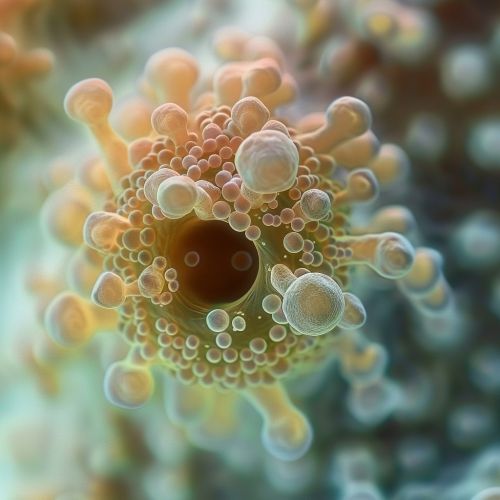Peroxisomes
Introduction
Peroxisomes are a type of cellular organelle involved in various metabolic processes, including the breakdown of fatty acids and the detoxification of harmful substances. They are present in virtually all eukaryotic cells, from plants and fungi to animals and humans.
Structure
Peroxisomes are small, membrane-bound organelles that are typically spherical in shape. They are composed of a single lipid bilayer that encloses the peroxisomal matrix, a dense core of enzymes and other proteins. This matrix contains the enzymes necessary for the organelle's various metabolic functions.


Functions
The primary function of peroxisomes is to break down long-chain fatty acids through a process known as beta-oxidation. This process generates heat and helps to maintain body temperature in mammals. Peroxisomes also play a role in the synthesis of certain lipids, including plasmalogens, which are important components of cell membranes.
In addition to these metabolic functions, peroxisomes are involved in the detoxification of harmful substances. They contain enzymes that convert toxic hydrogen peroxide, a byproduct of cellular metabolism, into water and oxygen. This detoxification process is crucial for cell survival and function.
Biogenesis
Peroxisomes are unique among organelles in that they can replicate themselves. This process, known as peroxisome biogenesis, involves the growth and division of existing peroxisomes. The process is regulated by a group of proteins known as peroxins, which are encoded by PEX genes.
Peroxisomal Disorders
Disorders of peroxisome biogenesis are known as peroxisomal biogenesis disorders (PBDs). These are a group of rare, genetic diseases that result from defects in the PEX genes. PBDs can cause a wide range of symptoms, including developmental delays, vision and hearing problems, liver disease, and neurological disorders.
Research and Future Directions
Research into peroxisomes has increased significantly in recent years, as scientists have begun to uncover the organelle's diverse roles in cellular metabolism and disease. Future research is likely to focus on further elucidating these roles, as well as developing new treatments for PBDs and other peroxisome-related disorders.
